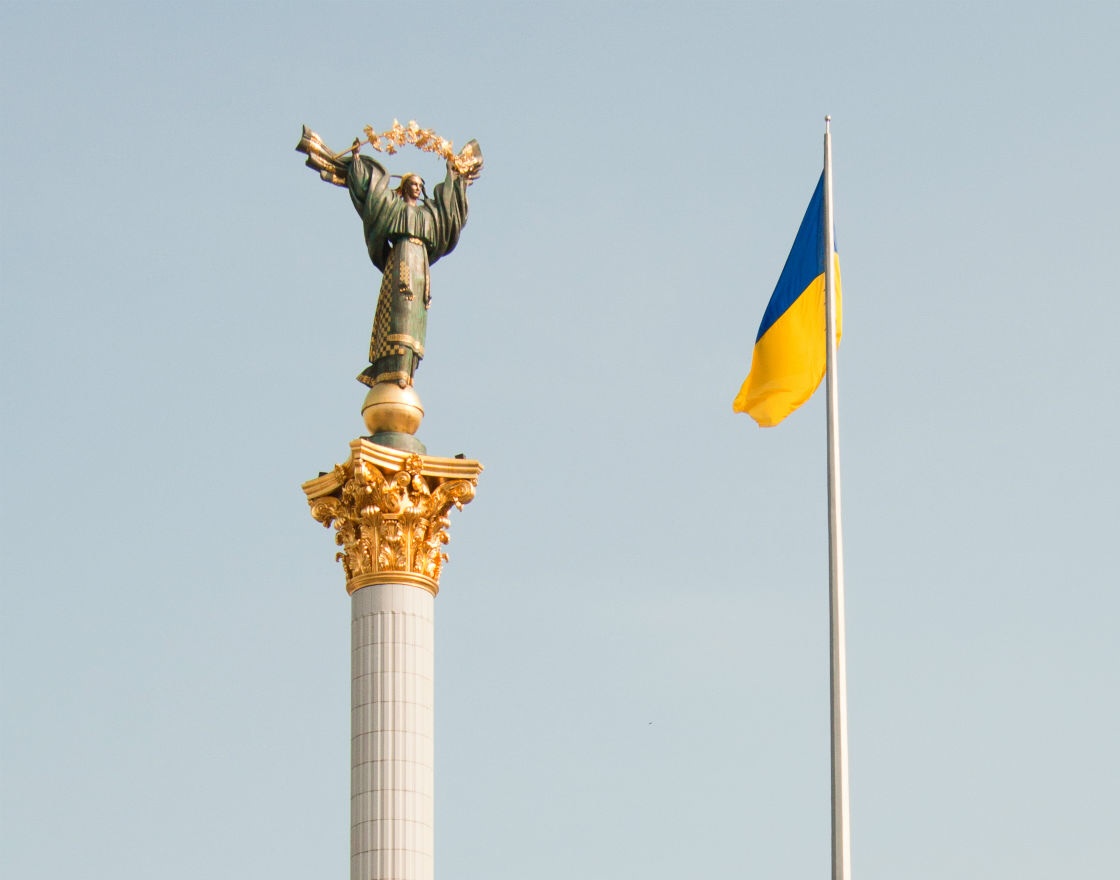Tydzień w gospodarce
Category: Trendy gospodarcze

(CC By ND Aleksander Saprykin)
CE Financial Observer: How much does the war cost? How much does it cost the Ukrainian state?
Oleksandr Zholud: According to the evaluations of economists, one day of conducting the war costs from 6 to 20 million hryvnias (approx. 4 – 14 million euro). Such big differences result from whether we take into consideration the expenses of the Ministry of Defence, or also the economic losses arising out of military actions, e.g. the impossibility of running a business.
The IMF forecasts Ukrainian GDP to drop this year by 9%; in the first quarter, the drop amounted to as much as 17.5%. To what extent is this the effect of the war in Eastern Ukraine?
One has to be aware that this considerable economic slowdown is not the result of the events of 2014 or 2015. Ukraine has been in recession since the second half of 2012. In 2013, economic growth was 0%, however, only thanks to good weather and bumper crops. If we consider industrial production, it decreased both in 2012 by 0.5% and in 2013 by 4.7%.
What happened in 2014 only exacerbated the recession. In 2014, GDP declined by around 7% and the industrial production by nearly 11%. The official data from this year are calculated without Crimea and only a part of the Donetsk and Luhansk region is taken into consideration. If we had also included those territories, the decline would have been even worse. The GDP decrease is primarily the result of the diminished industrial production, mainly in the eastern regions of the country.
Is the cut-off from, for example, the mining industry a substantial loss for the economy? Some said earlier that the mines in the Eastern Ukraine had in fact been unprofitable, and that Ukraine subsidised more than profited from them, and also cheap coal was available in other regions of the world. Is the loss of those territories a problem?
The problem is that there are two types of coal mining in Eastern Ukraine: stove coal or so-called gas coal, and anthracite used in the iron and steel industry. The lack of the last one is a huge problem for the steelworks located outside Donbass, e.g. in Dnipropetrovsk and Zaporizhia Regions. This is very important for the Ukrainian steel industry, since it exports almost 80% of its production. The export of metallic ore (i.e. iron) accounts for one quarter of the total Ukrainian export of goods, and is a considerable source of foreign currency.
The war in the East poses a problem for coal processing too. One of the biggest coke plants in Europe, Avdiivka Coke Plant (it lies practically on the front line near Donetsk and has several times been under fire) is at risk of being destroyed. Additionally, the prices of metallic ore in the world have dropped by 1/3. So we would have faced a decline in production even without the war.
What about the aviation and space industry, which is strong in Ukraine, and was exporting a large part of its production to Russia, including the Russian arms industry? What problems does it experience? How has it been affected by the presidential decree prohibiting the export of equipment that might be used for military purposes?
Exports to Russia decreased substantially: by 67% in the period from the Q1’2014 to Q1’2015. It is difficult to get precise data of the exports for the Russian arms industry because the statistics include this item under general exports of industry products, which includes goods used also in the civilian sector. Ukraine stopped providing, for example, helicopters and plane engines to Russia, but it still has to service the equipment sold earlier, as this is required by the signed contracts.
In order to stop trade, the Russians applied both an official embargo and various pretexts. As in the case of the EU states, Russia banned the import of fruits and vegetables, dairy products, sweets, etc. Ukrainian export is also restricted under the excuse that some products do not comply with Russian sanitary standards.
In what way the war has affected the most important Ukrainian enterprises in the eastern part of the country?
Ukrainian companies have been forced to rearrange the transport network in terms of imports and exports, like the aforementioned iron and steel plants, for example, which began to import coke. The port in Mariupol, which is almost on the front line, has become less popular. On the other hand, the port in Odessa has gained in importance. This, however, raises transport costs.
The Ukrainian currency has devalued by half over the year. Is this also the result of the war?
The war, as in the case of the GDP decline, only deepened the negative trend. We would have faced a devaluation even without the conflict. In 2012-13, Ukraine’s currency reserves dropped from USD 38billion to USD 30billion – because the hryvnia exchange rate was artificially supported. The war in the east, however, practically closed the private capital markets for Ukraine. Of course, it isn’t an official embargo; it is just that foreign creditors offer such high interest rates on loans that Ukraine cannot accept them and is left without credits. Additionally, export to Russia brings smaller inflows, and the prices of metal ore have declined.
Assuming that the situation in the east of the country does not worsen, we will face a stabilisation of the hryvnia at a level close to critical. The resumption of the war may again lead to a drop in its value. It is difficult, however, even to define the critical level. Last year there were several official statements that the value of hryvnia had reached such a level, and then its value dropped even more.
In April 2014, right after the annexation of Crimea, the EU unilaterally reduced custom duty on Ukrainian producers. Has this helped the economy?
Firstly, the duties were quite low, and the export quotas were not increased, e.g. for agricultural products. Moreover, the majority of products in the EU require some kind of certificate, and producers must undergo the attestation process, which takes quite a lot of time. Thus, even without any quotas or duties, a considerable part of Ukraine’s production still cannot be exported freely to the EU. Ukrainian producers are only gradually obtaining all those certificates, although a year has already passed.
Would Ukraine survive without financial aid from the IMF?
Without this credit, Ukraine would certainly go bankrupt. But the IMF credit is only for the repayment of loans already incurred. This money is not injected directly into the economy.
Currently there are talks with private creditors, holders of bonds issued in euro, on the partial write off of the debts. They do not want to agree, however. And this is important, as the IMF has declared the successful debt restructuring a condition for further tranches of the credit. Ukraine wants to write off most of its debt, but so far is allowed only the postponement of the repayment date.
Oleksandr Zholud – Senior Analyst at the International Centre for Policy Studies, one of the most important Ukrainian think-tanks analysing economic policy.



